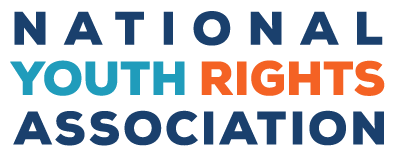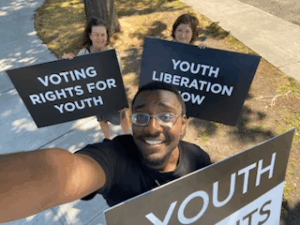In 1988, the William T. Grant Foundation released a report that found the picture painted by adult culture of youth in our society as pervasively negative. The commission wrote,
There is a portrait of youth that is not only misleading, but harmful. We ought to correct the record out of a sense of fairness, as well as accuracy. These young people desperately need a chance to get started in responsible careers. Instead, they are frequently saddled with the image of being uninterested and unwilling to assume responsibility. Complaining about youth is all too common. 1
If young people had been asked what they thought about this perception of them in 1988, they would have told you they were misunderstood and unfairly treated.
In the decade since this report, what has changed about adult society’s view of youth and youth culture? Are young people and teens treated fairly? More importantly, what are we doing to help service providers develop an understanding of and respect for the strengths and abilities of the individual? This is at the core of youth work and cultural competence–understanding and respecting the culture of youth.
Adult Power Over Young Lives
In discussing youth and cultural competence, we must understand the tremendous power adults have over the lives of young people–particularly youth involved with the juvenile justice or child welfare systems. Nearly every aspect of their lives–where they sleep, who they see, what contact they have with their own families, and in some cases the food they eat and the clothes they wear–is decided by adults.
Adults usually exert their influence and authority without regard for the experiences, feelings, or opinions of youth. This form of social control, coupled with the negative perceptions of young people that are prevalent in our society, leads to adultism. 2 Adultism occurs when adults have both a negative view of young people and the ability to exert control over the lives of youth.
Consider the implications of “adultist” attitudes on young people who are involved with youth-serving systems:
Adults assume young people are not capable of helping themselves, so they do “for” them. Also known as dysfunctional rescuing, this form of adultism results in lost opportunities for young people to take on new challenges, learn, and develop.
Solution:The alternative to dysfunctional rescuing lies in helping the young person accomplish his or her goals and make healthy decisions.
Adults may blame young people for the challenges they experience without regard for the environments in which they have grown up. As a result, young people don’t have the support they need and lose their motivation to participate in planning that directly affects their lives.
Solution: Ultimately, adults and young people need to engage in open dialogue about what is occurring in the lives of youth and explore the available options. With this type of connection, both youth and adults can take responsibility for their choices.
Adults may not make efforts to spend time with youth and learn about youth culture. When adults avoid contact with youth, programs and services are based on adult needs, and young people feel alienated from adults.
Solution: Adults need to make an effort to spend time with young people. Making contact ensures that young people and adults have opportunities to learn about each other and develop relationships.
Adultism is cyclical, occurring in the context of the interactions and relationships that adults and youth have with each other. Confronted with adultism, many young people in the care of social service institutions and youth-serving systems feel powerless and in some cases become angry, resentful, and disengaged. Adults may respond by becoming more authoritarian, exercising more control over the young person’s life.
Culture is the thoughts, ideas, behavior patterns, customs, values, skills, languages, arts, and religion or faith of a particular group or individual. 3 A young person who has been rejected or abused by his or her family and is subsequently labeled as a threat or danger to others will likely experience isolation and disconnection from his or her culture and identity. In many cases, youth in detention or a controlled institutional environment are stripped of their culture–and thus some of the basic strengths that may be useful to service providers as they develop service plans. When the voices of youth are not heard and staff are not trained or sensitized to the unique social challenges that young people face, these inflexible service systems help create youth who have, essentially, lost all hope for their future.
Breaking the Cycle
What can we do to value youth culture and break the vicious cycle of adultism and youth culture incompetence?
Develop an understanding of youth culture. Make an effort to learn about young people by asking questions and exploring the different facets that are central in their lives.
Demonstrate sensitivity in interactions with youth. Communicate openly and respectfully, refraining from judgment, and thinking about the ways in which our own values affect our relationships with youth.
Develop cultural competence in our work and our interactions with young people. Focus on understanding and valuing the unique talents and unlimited potential that young people offer. Ask questions about culturally competent policies and practices in youth and juvenile services, and inform institutions and systems of care. Assess sources of personal resistance and discomfort.
Most importantly, we can tap into the tremendous energy generated by youth and adults working in partnership. In working together and developing relationships, youth and adults are uniquely positioned to galvanize investment in collective goals, hopes, and dreams and promote cultural competence.
Jorge Velázquez is Director of CWLA’s Cultural Competence Division; Maria Garin-Jones is Director of Youth Services for CWLA.
Notes
- William T. Grant Foundation Commission on Work, Family, and Citizenship. (1988). The Forgotten Half: Non-College Youth in America. Washington, DC: Author.
- Adapted from Academy for Educational Development, Center for Youth Development and Policy Research. (1995). Advancing Youth Development–A Curriculum for Youth Workers. Draft prepared by author in collaboration with National Network for Youth.
- Definition adopted by CWLA in 1991 and revised in 2001. Available online at https://web.archive.org/web/20130820203828/http://cwla.org/programs/culturalcompetence/culturalabout.htm.
This article originally appeared in the January/February 2003 issue of
Children’s Voice, the bimonthly magazine of the Child Welfare League of
America. © 2003 CWLA. For more information on Children’s Voice, or to
subscribe, go to www.cwla.org/pubs.





